Lodniming bulbous culture, asidant, stands out from the original star of flowers and an elegant bush silhouette. The thermal-loving plant easily adapts to the conditions of moderate climate, without preventing high demands for content and care. When and how to put asidant, how to care for the plant to ensure its annual abundant bloom - read in this article.
Atdider, description of the plant
The asidance plant is a long-term grassy view belonging to the genus of the gladiolus and the family of iris.
The names of this popular garden plant have several:
- Gladiolus Muriel (according to accessories to the genus Gladiols and in honor of Muriel Erskine);
- Muriel Skar (for the morphological features of the structure of the leaves);
- Atdider Muriel (according to accessories to the Acidanthera section);
- The asidant two-color (in the color of the flower);
- Easy gladiolus (according to accessories to the genus of gladiolus and flavors of flowers).
Previously, this type of plant was isolated in a separate genus of Atantera, later it was attributed to an independent section as part of the kind of gladiolus. The name "Atdider" is translated as a "sharp flower", in the appearance of its petals.
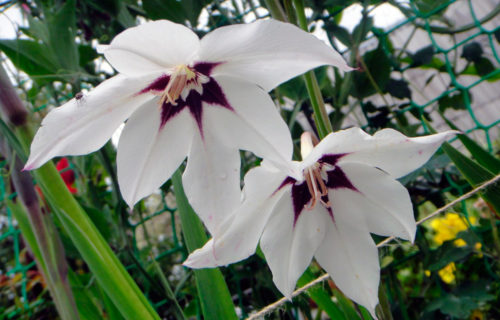
- In a wild form, the colors of the asidants are widespread in Africa and East Asia.
- The root system of fragrant gladiolus is represented by small clubnelluca, the oblong shape covered with a dense dark sheath.
- Atdider grows, on average, up to one meter in height. Stem in a plant, although thin, but rather steady and durable.
- Two long (up to 60 cm) and narrow expirers, a sword-shaped configuration, pointed at the edge, depart from the base of the stem.
- The most attractive part of the plant is gentle beautiful flowers. One Slender Coloros Azdanters "throws out" a cooled inflorescence of 5-10 flowers. The diameter of six petal flowers varies from 5 to 10 cm. Depending on the variety, the painting of the petals is white or pink, with a contrasting core of raspberry, purple and ink colors. Due to the pointed petals, the flower in shape resembles an asterisk.
- The perennial flowering period falls on August-September. At this time, the blooming accidant attracts insects a pleasant, sweetish aroma resembling Jasmine. At night, the smell of colors is enhanced. Flowers on one blur disclose gradually, bottom-up, increasing the total duration of the bloom of the spoze to one month.
- The fruit of tuberukovichny culture is represented by an elongated box with a lot of seeds.
- Given the "African" origin, the view refers to thermal-loving plants, poorly carrying frost. This does not mean that the asidant cannot be grown in the regions of a harsh winter climate. It will be enough just to dig bulbs asidants for the winter every year, and in the spring again to plant in the ground.
- Due to the long-lasting seasonal period, Gladiolus Muriel can be grown in pots, as a houseplant and greenhouse greenhouses. Bouquets for a long time retain freshness, aroma and beautiful appearance.
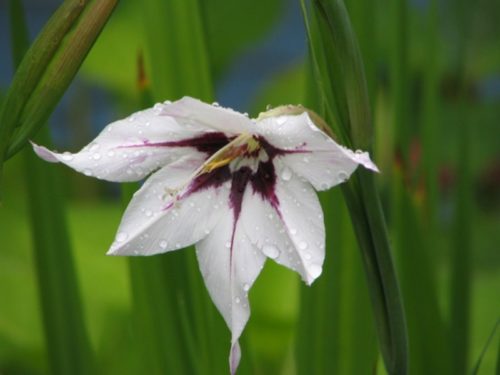
Reproduction of asidants
The gladiolus of Atdider breeds seeds and bulbs.
In practice, the seed method is practically not used by gardeners, as this is a very time-consuming and long process. The flowering of perennial at the same time comes no earlier than in 3 years. The most effective way of reproduction is with the help of tuberukovits.
Reproduction of asidants seeds
- Seeds are sown in a container with a prepared soil at the end of winter or early spring.
- For nutritious soil mixed in equal parts, sand, peat and garden land.
- The container is placed in a warm and bright place, with air temperature about +20 0C, providing regular soil moistening (better than a pulverizer). The container is better to cover with glass or film, imitating a small greenhouse. So that the seeds are not sinking, the greenhouse should be regularly ventilated.
- In April-May, the grown seedlings dive and transplant into separate cups or a bed.
- In the fall, small bulbs dig up, maintaining until next spring. The same procedure is done for the next year.
- For the 3rd year, grown onions will be able to form blooms with inflorescences.

The reproduction of the accidant "kids" and the clubnellukov
- With competent plant care, at the end of the vegetation of the asidance forms full-fledged daughters, ready for landing for the next year, and a lot of small "children".
- Dropping the codnelukovitsa asidants for the winter, separated by the season, small "kids". Suggested in the size of the bulbs stored before the onset of spring.
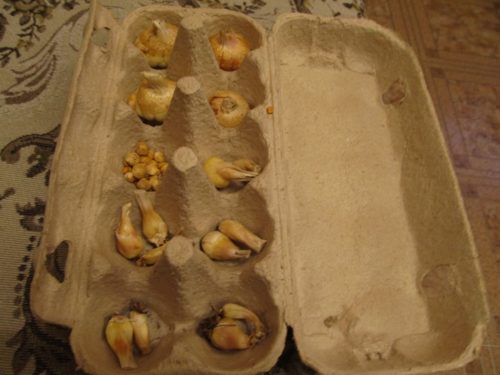
- In the spring, with the arrival of stable warmth, all the clubnelukovitsa are planted into the open ground.
- Already in the current season, child bulbs and larger "kids" will be delighted with blossom, small specimens need to be revealed.
- Small "kids" - clubnellukovitsa is more convenient to move on a separately designated area, in rows, providing careful care. Watering, feeding, light loosening is the main agrotechnical events.
- Adult clubnellukovitsa lives no more than 5 years, so it is important to constantly grow "kids", rejuvenating and increasing the planting material thus.
Varieties asidants
- In the culture of the most common variety is a two-color asidant. The plant forms white, large flowers (up to 12 cm) with a cherry or violet spot in the center.
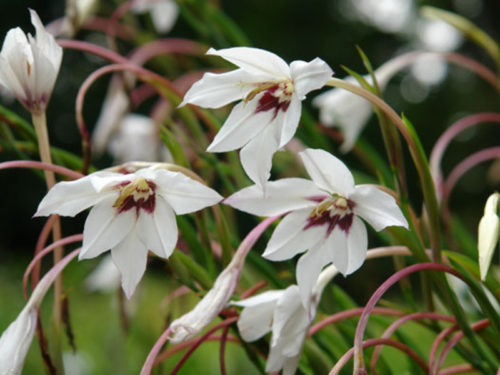
- Tropical asidance is distinguished by double-sided inflorescences consisting of 5-6 white-raspberry flowers. The height reaches 130 cm, ribbed leaves, dark green.
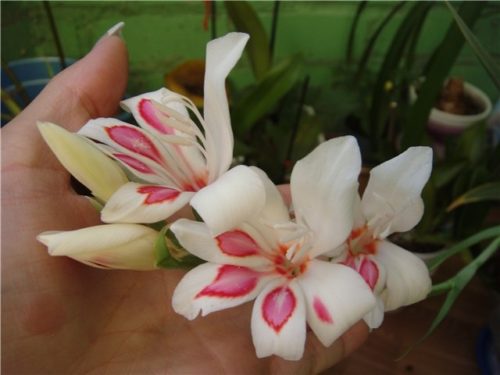
- The incisioner is a short-cutting - a wild look characterized by purple flowers on a short leg (tube).
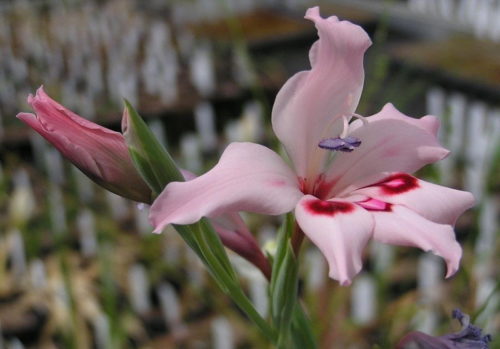
- White asidant is replete with fragrant inflorescences of snow-white tones. A thin straight-standing stem asidants White only emphasizes the sophistication of the plant.
- Atomider Fourcade has a low refined stem and minor (1-2) number of gently pink flowers.
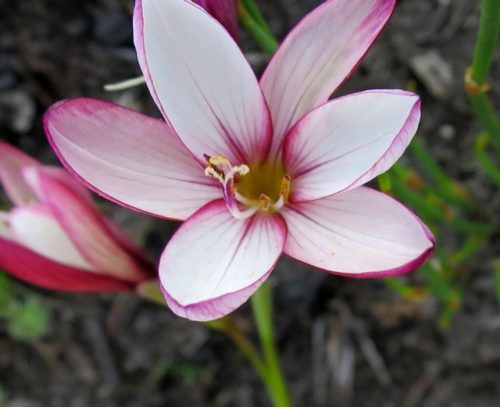
- The asidant of the Cape is highlighted by spectacular flowers of cream, with red streaks, flowers. It looks impressive in the landings by groups.
- Atlantic acidic asidant received its name thanks to a subtle, similar to cereal cultures, leaves. Throwing thin flowerons "carry" purple-snow-white inflorescences.
Atdider, landing features
- Light and thermal-loving culture, asidant, it is better to plant on solar, open, protected from wind, plots. Also a minor half day. In the shadow, this flower culture is unlikely to "please" blossom. Strong gusty winds can break down thin stems and shards.
- The soil for the tuberukovyts is suitable, fertile, with a good drainage layer and a weakness reaction of the medium. It is better to prepare a landing plot in advance, reapproaching it together with the introduction of organic and mineral fertilizers. As for drainage, the lower the area is, the greater should be a drainage layer. In conditions of stagnation, moisture, high risks of bulbs.
- Looking on bulbs Atomdants is carried out late in spring when the soil warmed well, and the return freezes remained "far behind."
- Before boarding, it should be sorted by all the clubs in size, and dotted or dedicated instances - delete. A healthy bulb normally has a milk color, and its covering shell is dry, light brown. The bulbs get out of the storage site for about 2 weeks so that they warm up and "woke up" in a warm place.
- Immediately before landing, the bulbs are soaked in a weak solution of manganese, which is preventing unwanted diseases or pests.
- Plant plant in the hotel pits or rows, in the case of group landings asidants.
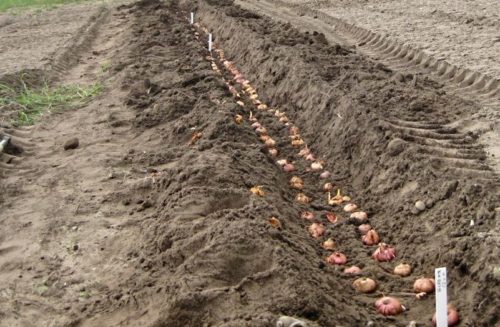
- The depth of the sealing of tuberukovol in the soil is about 8-12 cm. The interval between plants is from 10 to 20 cm, depending on the size of the bulbs. "Children" deepen into the soil at the distance at the rate of no more than two diameters of its bulbs.
- In the landing houses, to improve the quality of the soil, you can add a handful of sand and peat, and after landing be sure to pour.
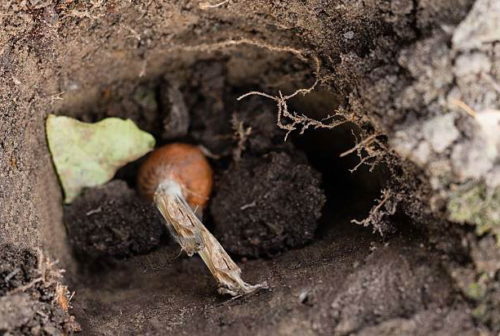
- Many gardeners are pre-equipped with bulbs. This technique makes it possible to provide earlier and abundant blooming asidants. This is especially true for the middle strip of Russia, with late tightening spring, rainy summer and early cold. For this, the clubnelukovitsa land in early spring in indoor pots or a special container, providing heat, light and regular watering. Considering that this is a temporary place of growth, the bulbs close in the soil shallowfall, up to 5 cm. The proceeding and sprouted onions are then planted into the open ground to a permanent place. Gardeners note the higher endurance of such plants compared to the usually planted specimens.
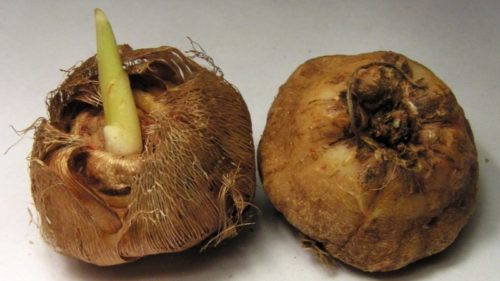
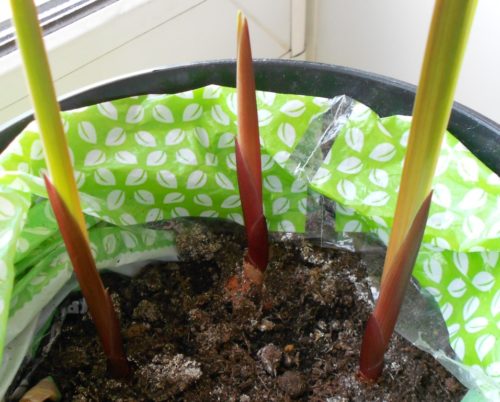
Atdantera, plant care
Atader is an unpretentious plant that does not require a particularly difficult care. Ordinary agrotechnical events (watering, loosening, feeding, the fight against pests) ensure the optimal development of tuberukovic culture.
Special importance for perennial plays trimming, timely extraction from the soil and subsequent proper storage of bulbs.
Watering asidants
- Watering should be moderate, but regular. Culture does not tolerate both drought and moisture stagnation. The drought adversely affects the development and flowering of culture, and the excess moisture can lead to the rotation of the root system. According to external signs, the land where the asidant is growing, should always be moistened.
- During the flowering period and after it, watering is reduced.

Loosening accidantry
- After irrigation, the soil must constantly loose.
- With the appearance of weed herbs, it is deleted in a timely manner from the site.
- The mulching of the root zone will not only prevent the appearance of weeds, but also will ensure the preservation of moisture. The mulch can use peat, humid, sawdust, beveled grass. The layer of mulch does not allow the formation of a dry crust that prevents the soil aeration.
Undercalinking asidants
- Any plant is responsible for fertilizer. Not an exception and accidereer, the stocks of the bulbs of which, as the flower develops, is quickly dried.
- To feed the plant is needed in a timely manner, several times over the entire period of vegetation: during the landing, during the period of active growth, extension of green mass and immediately before flowing (at the stage of the bootonization).
- During the landing period, organic and mineral fertilizers are entered for feeding, as a rule, mineral complexes are used in the growth process. Moreover, nitrogen-containing fertilizers are made to build up greens, and in the period of bootonization - phosphorus - potash complexes.
- Fertilizer's application is better combined with watering plants.
Pruning asidants
- Seamless flowers must be cut as the latter inflorescences. This will allow to maintain stronger and viable codnelukovitsa asidants.
- After trimming, in the fall, only the lower leaves are left on the plant necessary for the full aging of tuberukovitz.
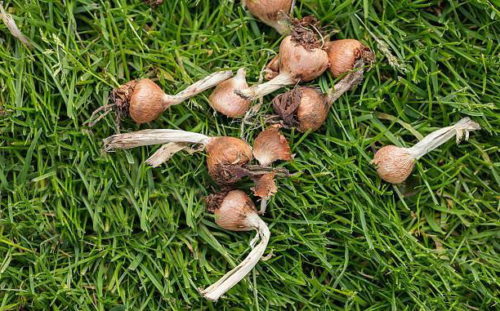
Insidant pests and diseases
- From the pests of the asidance can be damaged by a shield, aphid, bulbite tick or slugs. For prevention purposes, you can use folk remedies: mustard powder or ammonia alcohol. At the first signs of the appearance of pests, the bush is treated with insecticides, and damaged parts of the plant are removed. Slug or snails are collected manually.
- Of the diseases of the asidance can be inflated by milder dew, root rot, mosaic or rust. In such cases, the processing of burgundy liquid (1% solution) or a special fungicidal agent will help.
- The appearance of unwanted pests and the development of diseases is promoted by the wrong care for perennial: excessive watering, lack of drainage, mulch, thickets of weed grass.
Storage of bulbs Atindants
- So that Atdider pleased with his bloom and the next year, it is important to digitically dig and keep the clubnellukovitsa. If you leave them on the wintering in the ground, they are most likely freezed or strongly weakened.
- Late in the fall, before the onset of frosts, the clubnelaukovitsa dig out of the ground together with the leaves remaining after trimming.
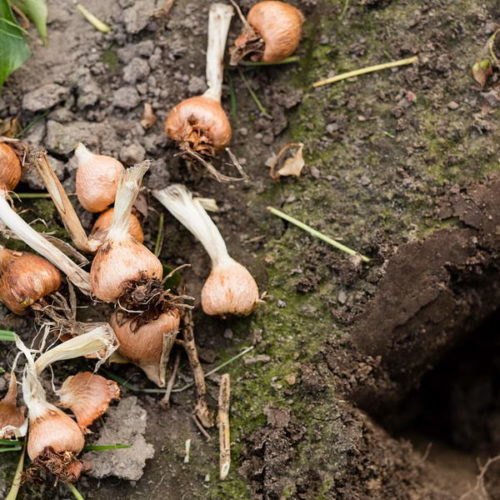
- The stem is cut from the bulbs, leaving "penets" in 2-4 cm. The tubers are cleaned from the ground, dry long roots and separate "children" (for subsequent reproduction).
- For the prevention of infection of the fungus, tubers are treated with a fungicidal preparation against rot and mold. Processed bulbs dried in a warm room for about a month.
- Before placing the bulbs in a dark, dry and cool place (+ 10-15 0C) to wintering, they are slightly cleaned from the top scaled layer and soil residues.
- Store clubnelukovitsa Atomidants Home Conditions are better in paper package or box, with ventilation holes.
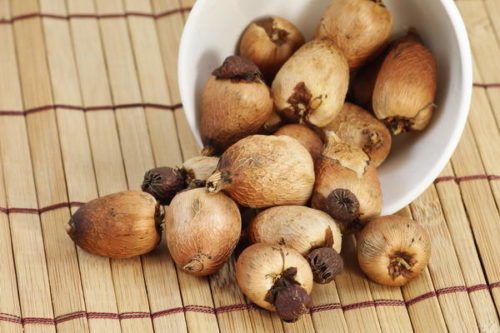
Atdider in landscape design
- A gentle herbal plant, asidance, is widely used for the design of open soil landscapes.
- Atomiter is planted independently, mono groups or in compositions with other plants.
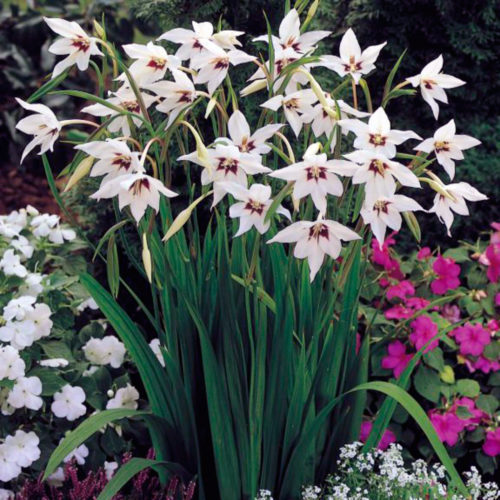
- This kind of gladiolus is well combined with Astrami, Lrangess, Shalfege, Monary, Coreopsis.
- Atomider Muraila beautifully and harmoniously looks near the artificial reservoirs, on the Alpine slides and ordinary flower beds. Fragrant thin fragrance of flowers will be especially felt near the terraces, houses of houses or garden benches.
- Celebrate culture fills vertical spaces well, thanks to thin, long, stretch leaves and stalk.
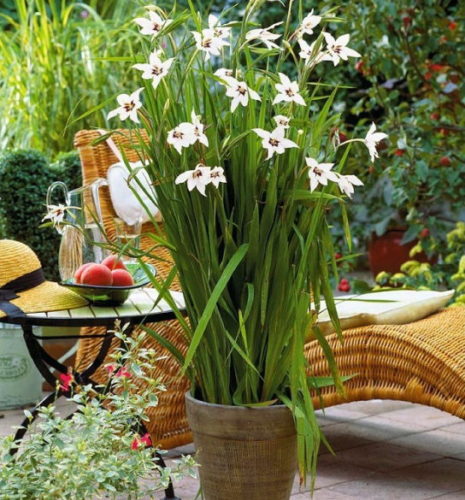
- Asidants look picturesque not only in the open soil, on flower beds or flower beds, but also in large garden vases or decorative pots. In addition, the flowers have long stand in a cut, thinning jasmine fragrance.
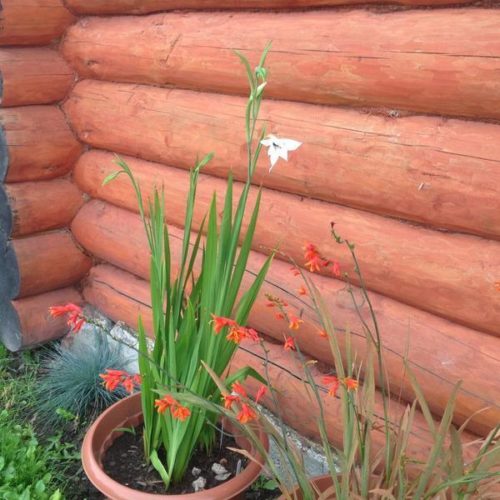
Conclusion
- The cultivation of asidants is a simple process that will subsequently at the abundance of gentle, sophisticated decorative flowers.
- Skinnelukovitsa plants are used as a planting material of the flower. Culture quickly and easily multiplies at home.
- Landing and care Acidants in open ground has a number of features whose compliance will allow for more than one year to successfully grow this elegant culture on its plot.
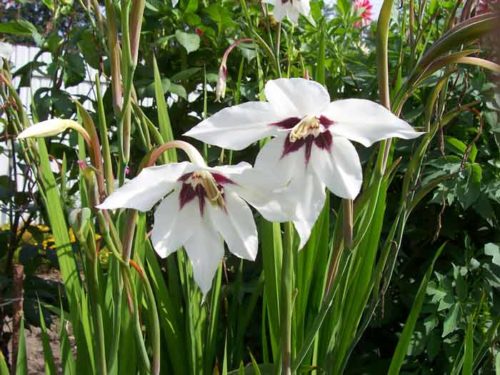

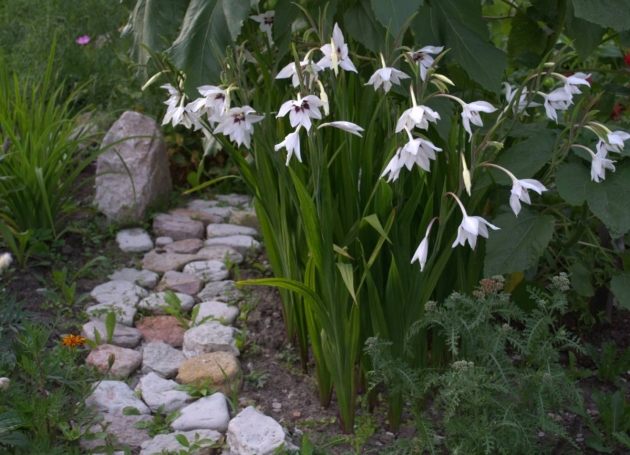
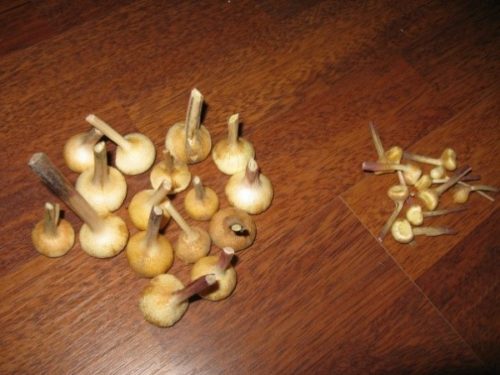
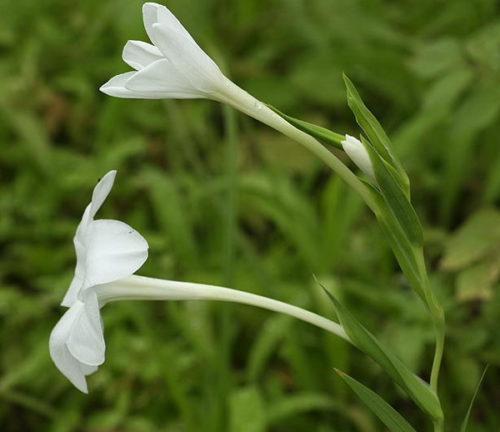
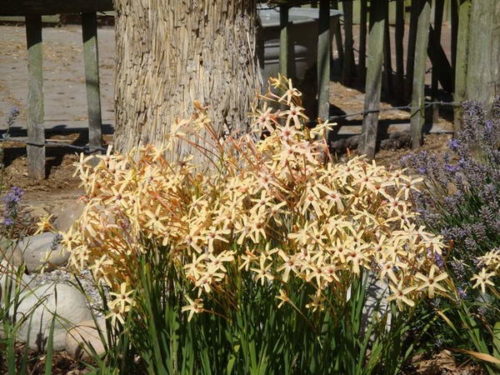
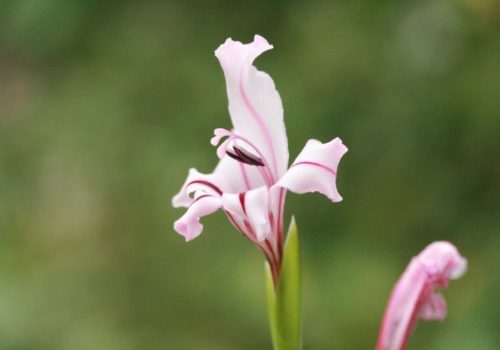

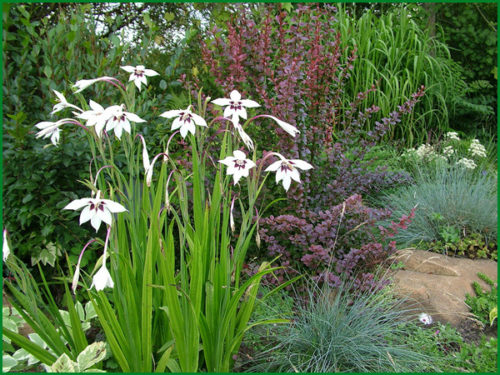
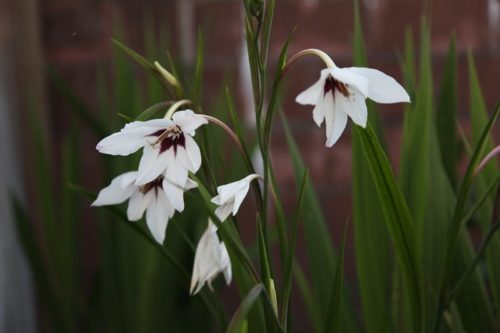
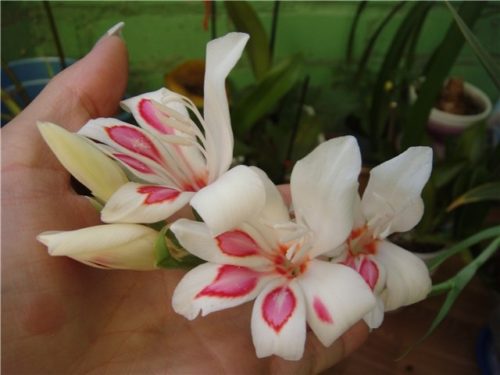
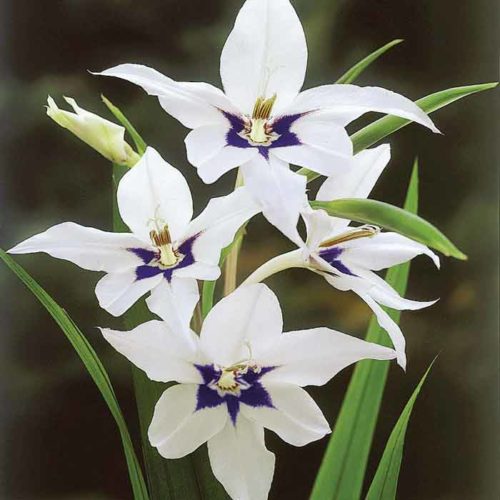
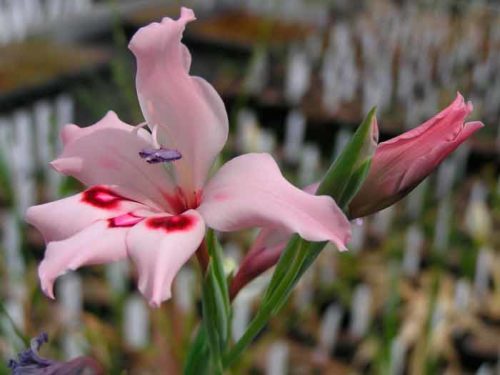
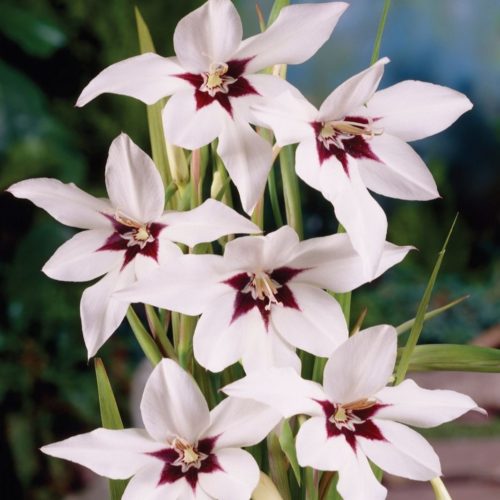
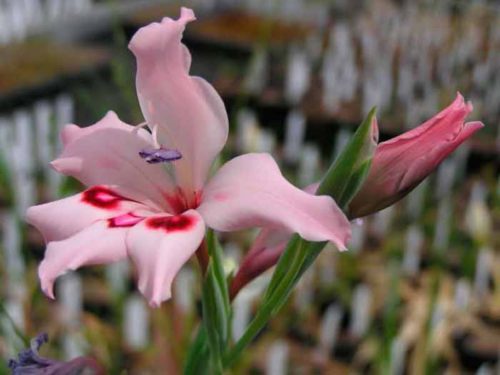
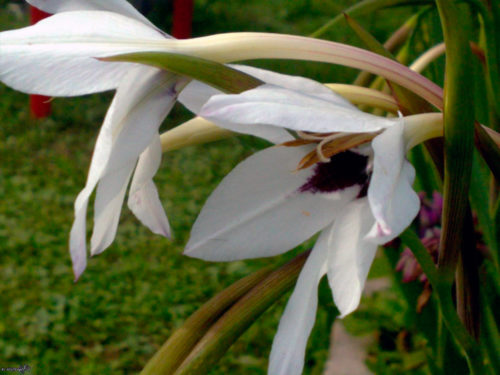
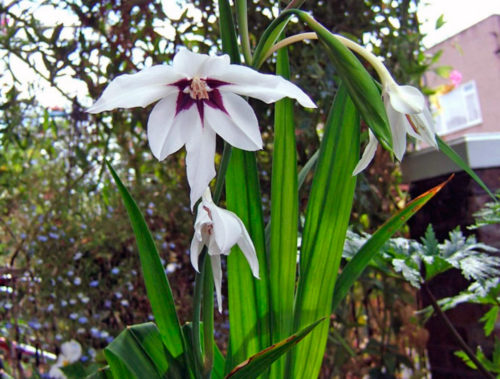
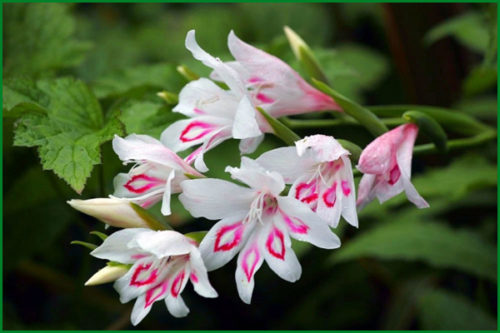
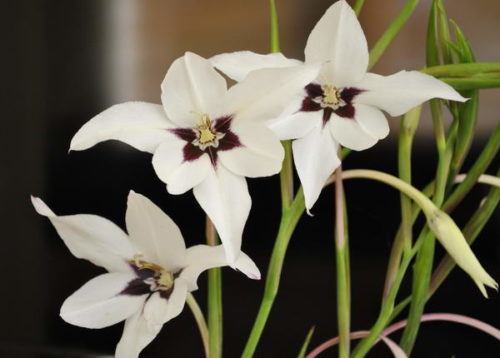












 Start a discussion ...
Start a discussion ...